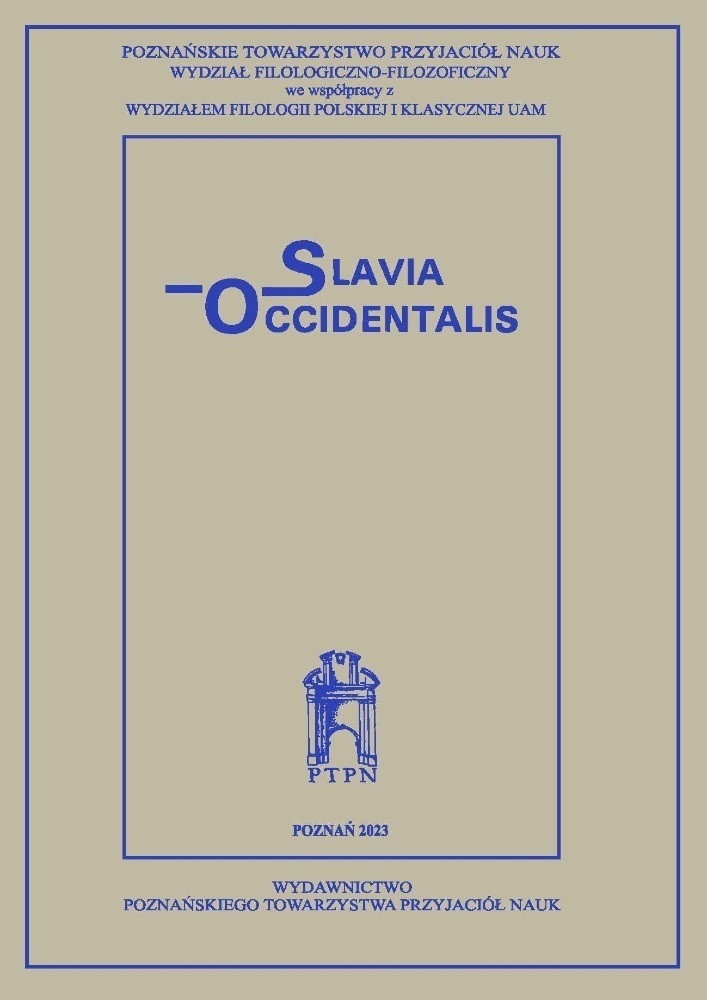Abstract
The paper discusses the translation of Winnie-the-Pooh into Upper-Sorbian (Winij Pu). Its aim is to present and assess the translation of proper names in the Upper-Sorbian version by Edward Wornar. The author compares the strategies and techniques used by the translator with those deployed in the Polish and Czech translations of the book. The examination of Wornar’s version demonstrates that the translator used many a domestication technique. The translation under scrutiny is positively evaluated as it wisely utilizes various available strategies and techniques to render the original text accessible and acceptable to the target language and culture.References
Alvstad C., 2010, Children’s Literature and Translation, [w:] Gambier Y., Doorslaer (eds.), Handbook of Translation Studies, Vol. 1. John Benjamins, Amsterdam/Philadelphia, s. 22–27. DOI: https://doi.org/10.1075/hts.1.chi1
Dziuban A., 2009, Nazwy własne w przekładach literatury dziecięcej na przykładzie Opowieści z Narnii Clive’a Staplesa Lewisa, „Prace Językoznawcze”, zesz. XI, s. 31–52.
Faßke H., 1981, Grammatik der obersorbischen Schriftsprache der Gegenwart, Domowina Verlag, Bautzen.
Fernandes L., 2006, Translation of Names in Children’s Fantasy Literature: Bringing the Young Reader into Play, “New Voices in Translation Studiem” 2, s. 44–57.
Fornalczyk A., 2007, Anthroponym Translation in Children’s Literature – Early 20th and 21st Centuries, “Kolbotyra “57 (3), s. 93–101. DOI: https://doi.org/10.15388/Klbt.2007.7562
Gonzáles-Cascallana B., 2006, Translating Cultural Intertextuality in Children’s Literature, [w:] Children’s Literature in Translation: Challenges and Strategies, ed. van Coillie J., Verschueren W.P., St. Jerome Publishing, Manchester, s. 97–110.
Grzenia J., 1998, Słownik nazw własnych, Wydawnictwo Naukowe PWN, Warszawa.
Hejwowski K., 2004, Kognitywno-komunikacyjna teoria przekładu, Wydawnictwo Naukowe PWN, Warszawa.
Hilke E., 2007, Die Aufgaben der Namen in literarischen Texten – Science Fiction und Fantasy, “Zeitschrift für Literatur Wissenschaft und Linguistik” 147, s. 151–163. DOI: https://doi.org/10.1007/BF03379765
Jaleniauskienè E ., Čičelytè V., 2 009, The Strategies for Translating Proper Names in Children’s Literature, „Kalbụ Studijos” 15, s. 31–42.
Nord Ch., 2003, Proper Names in Translation for Children: Alice in Wonderland as a Case in Poiont, “Meta” XLVIII, 1–2, s. 182–196. DOI: https://doi.org/10.7202/006966ar
Kjellmer G., 1977, Why is Winnie the Pooh? On the Use of the Definite Articlein Some English Personal Names, „English Studies” 58, nr 6, s. 508–514. DOI: https://doi.org/10.1080/00138387708597859
Oittinen R., 2008, From Thumbelina to Winnie-the-Pooh: Picture, Words, and Sounds in Translation, “Meta” LIII, 1, s. 76–89. DOI: https://doi.org/10.7202/017975ar
Shavit Z., 1981, Translation of Children’s Literature as a Function of its Position in the Literały Polysystem, “Poetics Today” 2/4, s. 171–179. DOI: https://doi.org/10.2307/1772495
Tabbert R., 2002, Approaches to the Translation of Children’s Literature. A Review of Critical Studies Since 1960, „Target” (14:2), s. 303–351. DOI: https://doi.org/10.1075/target.14.2.06tab
van Collie J., 2006, Character Names in Translation. A Functional Approach, [w:] van Collie J., Verscheuren W.P. (eds.), Children’s Literature in Translation. Challenges and strategies, UK& Kinderhook, Manchester, ST. Jerome Publishing, USA, s. 123–139.
Woźniak M., 2012, Puchatka przepustka do sławy. Pochwała Ireny Tuwim, „Przekładaniec” 26, s. 115–134.
License
Copyright (c) 2014 Grzegorz Szpila

This work is licensed under a Creative Commons Attribution-NonCommercial-NoDerivatives 4.0 International License.
